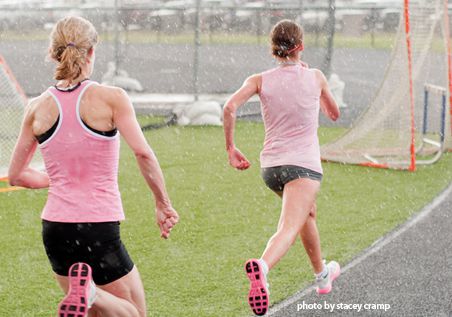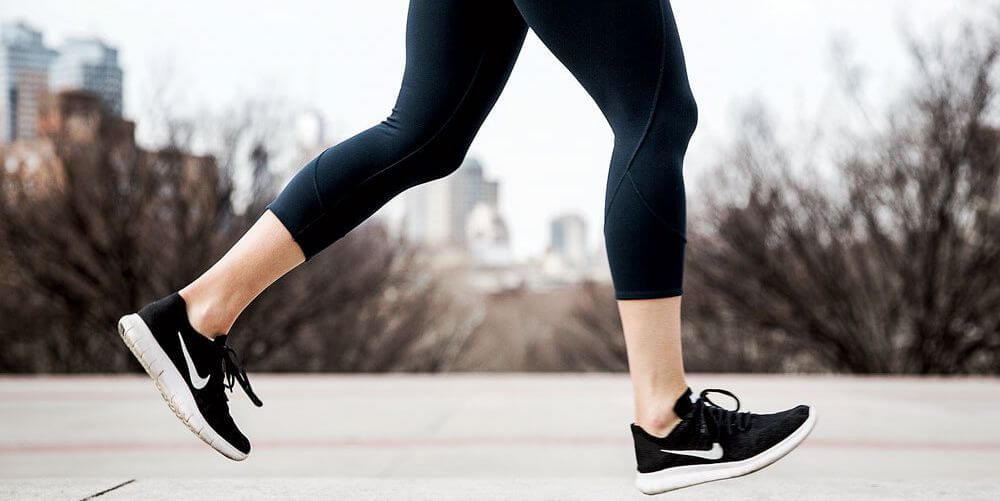Recovery = benefit and good scheduling = good training
As a seasoned Masters Athlete, you probably follow a well-designed training program that includes a mix of key types of workouts. And you’ve read our info on the de-training affect!
As a serious Masters Athlete taking care of your body and wanting to improve every area you can, V02 max intervals, tempo runs, basic speed reps and long runs are likely integral parts of your schedule.
EFFECTS OF VARIOUS TYPES OF WORKOUTS
While running-achieving specific adaptations to improve are unquestionably cumulative, each little piece of training within the programme has its own recovery timeline, and it’s vitally important not to overlook this information when planning your training. The best time to perform anything specific depends upon the time it takes from doing it to realising and achieving its benefits on goal race day, along with the actual recovery profile of a workout. As stated earlier, the very short and simple answer regarding those gains — for all the types of workouts — is about eight to 10 days. However, because of the different stresses that each individual workouts place on the body, each must be thought about separately. (See “Scheduling Your Schedule”, below.) Knowing this information means knowing what to plan in the build up before an important race.
V02 max intervals tax the body the greatest and take the most recovery time. Pfitzinger believes therefore that full recovery takes about eight to 10 days to see the benefit. “Meaning that you’d want to do your last hard V02 max workout eight to 10 days before your major race,” he says. “During general training or before a lesser race, you do not need therefore to be as recovered from your hard workout before doing another, so you could do another V02 max session after five or more days.”
Training planning for middle and long distance:
| Type of Workout | Example | Time Until Next Similar One | Day Before | Day After |
| VO2 Max | 5 x 1000m @ 5K race pace w/ 400m recovery jog | 5 or more days | recovery run | recovery run |
| Threshold | 4-mile tempo run @ half marathon race pace | 4 or more days | recovery run or speed development | recovery run, speed development or easy long run |
| Speed Development | 12 x 200m @ mile race pace w/ 200m recovery jog | 2-3 days | recovery run, tempo run or easy long run | recovery run, long run or tempo run |
| Long Run | 18 miles @ 1:00/mile slower than marathon race pace | 4 or more days | recovery run or speed development | recovery run |
Holy grail of Lactate threshold recovery is closer to probably four days. According to Pfitzinger tempo runs are the easiest to recover from because they break down the body the least. “An athlete could do a lactate threshold workout roughly every four days and easily be fully recovered for a less important race. For a major race I would recommend eight days or more after the last lactate threshold workout.”
Faster speed repetitions, if performed as longer intervals like repeat 400ms, can just be as taxing as V02 max workouts and need to be monitored and used sparingly. However, workout such as extended strides of 150m or 200m require less recovery and could be done that bit closer to a race.
Recovery time required from a long run varies depending on the intensity and duration, but four days is generally the minimum recommended amount of time required for complete recovery, although your glycogen stores usually are replenished within roughly about 48 hours.
HOW TO MAKE ADJUSTMENTS
Using this information should allow you to plan your training to best yield the best outcome knowing how to peak for your event with the right amount of recovery and training effect
As an example, if you’re aiming for a peak performance at a parkrun on Saturday morning, don’t be cranking training sessions of 6 x 800m at V02 max pace on the midweek prior, as you will still be in the none recovered “stress which leads to fatigue” phase of recovery when it comes to race day.
Take a look at our Coaching page for more information on how to get the best from your training





